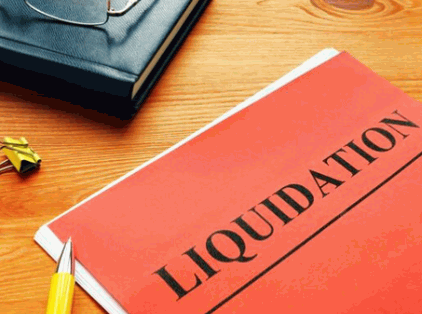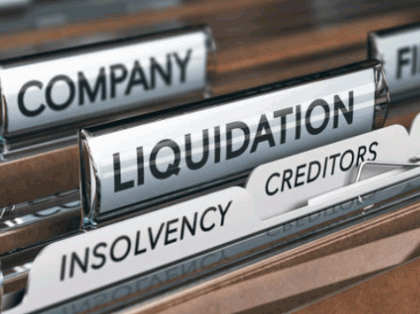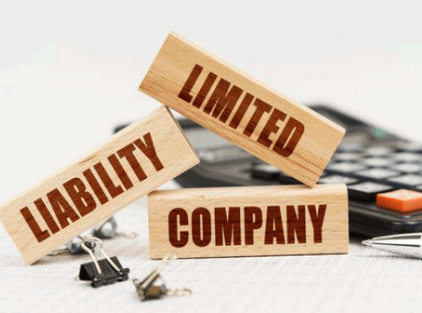- Home
- What are we
- Who we help
-
- How we help
-
-
-
- Accounting
-
- Advisory
-
- Business Support
-
-
- Resources

Closing a limited company can be a daunting task, especially when considering the financial implications. However, understanding the various methods and their associated costs can help business owners make an informed decision. If your limited company owes money, or you are an insolvent company, you are probably looking for the most effective way to close a limited company.
Understandably, if a company owes money, finding considerable sums to contact Companies House and close a limited company might be challenging.
At Auditox Accountancy, we are always on hand to assist you, and we can provide you with guidance and actionable information on the most cost-effective ways to close a limited company in the UK.
Table of Contents
There are several methods to close a limited company, each with its own set of costs. The right method largely depends on the company's financial health and specific circumstances.
When a company has served its purpose or is no longer in operation, one of the most straightforward and cost-effective ways to formally close it is through company dissolution, commonly referred to as voluntary strike-off. This method is particularly suitable for solvent companies, meaning those that can cover all their debts and obligations.
Company dissolution is a process where a company requests to be removed or struck off the Companies House register. Once this is done, the company ceases to exist. This method is often chosen by companies that have minimal physical assets or those that have not been significantly operational in terms of revenue generation.
Find out more: How To Close A Limited Company That Never Traded

Starting with the fee due to Companies House, here is an overview of the costs you'll face when closing down a limited company.
Striking Off Fees: A nominal fee of £10 is required to file for a voluntary strike-off with Companies House. This is the official application fee to start the dissolution process.
Accountant Fees: There is a range of accountants’ fees to consider with a company dissolution, including:
Finalising Books: Before closing, the financial records and company bank account need to be finalised, ensuring all transactions are accounted for.
Tax Returns: The company must submit its final tax returns, ensuring all tax obligations, including any corporation tax, are met.
Advisory: Accountants and licensed insolvency practitioners may charge for their expertise in guiding the company through the dissolution process, ensuring all financial aspects are handled correctly. This can range from approximately £500-£1000, but please obtain quotes from accountants and licensed insolvency practitioners before you seek professional advice.
Legal Fees: Legal professionals play a crucial role in the following tasks when you close a limited company, so it's understandable there are legal professional fees to manage:
Reviewing Contracts: Ensuring that all contractual obligations are met and there are no pending liabilities.
Terminating Agreements: Formally ending any existing agreements or contracts.
Guidance: Providing advice on the legal implications and requirements of dissolution. This service typically costs around £300.
Creditor/Supplier Payments: Before dissolution, it's imperative to settle any outstanding payments of the limited company. This includes debts to creditors, suppliers who are owed money, and payments due to contractors.
Redundancy Pay: If the company has employees, they may be entitled to redundancy pay. This is financial compensation for employees who are being let go because their position no longer exists.
Early Termination Fees: Some contracts, especially those related to equipment leases or long-term service agreements, may have clauses that impose penalties for premature termination. Companies must be aware of these and factor them into their closing costs.
Director Loan Repayment: If directors have loaned money to the company, these loans must be repaid in full before the company can be dissolved.
Document Storage: Even after dissolution, the company is required to maintain certain records, accounts, and tax filings for a specified retention period. There might be costs associated with storing these documents securely.
The voluntary strike-off process is a streamlined way of closing a solvent company. However, it's essential to be thorough and ensure all financial, legal, and administrative obligations are met, and an insolvency specialist will help you with this.
Properly navigating this process can save time, money, professional fees, and potential legal complications in the future.

The process called Members' Voluntary Liquidation (MVL) is a structured and formal procedure designed specifically for the closure of solvent limited companies. Solvent, in this context, means that the company is financially capable of settling all its debts within a stipulated period, typically 12 months.
The primary objective of an MVL is to allow company directors and shareholders to close down a company in a controlled and orderly manner, realising the maximum value from valuable assets from the winding-up process.
The MVL process is initiated when the directors and shareholders collectively decide that the company has served its purpose, or it's more beneficial to close the company rather than continue trading. This decision is often driven by various reasons, such as the completion of a project, the retirement of key personnel, or a strategic shift in business direction.
A licensed insolvency professional plays a pivotal role in the MVL process. Their responsibilities include:
Assessment: Before initiating the MVL, the insolvency professional will conduct a thorough assessment to confirm the company's solvency. This ensures that the company can meet all its financial obligations.
Asset Liquidation: The practitioner will oversee the sale or liquidation of the business assets, ensuring they are sold at fair market value to maximise returns. If there are significant assets, this could be a considerable sum of money.
Debt Settlement: Using the proceeds from the asset liquidation, the practitioner will settle any remaining debts or obligations of the company. This includes payments to creditors, suppliers, and any other financial commitments.
Distribution To Shareholders: After all debts are settled, the remaining funds are distributed among the shareholders. The distribution is typically proportional to the shareholding unless otherwise specified in the company's agreement.

Some of the professional fees that arise during the MVL process include:
Liquidation Fees: The fees for an MVL process can vary based on several factors:
Company Size: Larger companies with more assets and complex structures might incur higher fees.
Asset Complexity: The nature of the company's assets can influence the cost. For instance, tangible assets like property or machinery might require valuations, while intangible assets like patents or copyrights might need specialised assessments.
Duration: The length of time it takes to complete the liquidation can also impact the cost. Faster liquidations might be more expensive due to the intensive effort required in a shorter time frame.
Typically, for companies with fewer assets, the starting fee is around £1,500. However, as the asset value and complexity increase, so do the fees.
Members' Voluntary Liquidation is a comprehensive and structured approach to closing a solvent company. While it involves costs, the benefits of a controlled and orderly closure, combined with the expertise of a licensed insolvency practitioner, ensure that stakeholders' interests are protected and maximised.

Creditors' Voluntary Liquidation (CVL) is a formal insolvency procedure designed for companies that find themselves in a position where they are unable to meet their financial obligations. This means the company cannot pay its debts as they fall due. Unlike the Members' Voluntary Liquidation, which is for solvent companies, CVL is specifically for insolvent ones.
The CVL process is initiated when the directors of a company recognize that the business is insolvent and there's no viable route to recovery. Instead of allowing the company to accrue further debt, the directors take a proactive step to cease trading and start the liquidation process. This action is taken in the best interests of the company's creditors, ensuring they receive the maximum possible return from the company's remaining assets.
Once the CVL process begins, a licensed insolvency practitioner is appointed as the liquidator. Their primary responsibilities include:
Asset Realisation: The liquidator will take control of the company's assets and ensure they are sold or liquidated at the best possible price. This might involve auctioning assets, direct sales, or other methods to maximise returns.
Debt Settlement: Using the proceeds from the asset sales, the liquidator will settle the company's debts in a specific order of priority, as defined by insolvency laws. Secured creditors are typically paid first, followed by unsecured creditors and, finally, shareholders, if any funds remain.
Investigation: The liquidator may also investigate the company's financial affairs to determine if any wrongful trading or misconduct occurred. If any irregularities are found, directors could face legal consequences.
Closure: Once all assets are liquidated and debts settled to the best extent possible, the company is formally dissolved.

Liquidator's Fee: The cost associated with the liquidator's services can vary based on several factors:
Company Size: A larger company with more assets and a complex structure might result in higher fees.
Nature of Assets: Tangible assets like real estate or machinery might require specialised valuations or sales methods, potentially increasing costs. Intangible assets, such as intellectual property, can also influence fees based on their complexity.
Duration Of Liquidation: The length of the liquidation process can impact costs. A prolonged liquidation might result in higher fees due to the extended involvement of the liquidator.
Generally, the liquidator's fee for a CVL process ranges from £3,000 to £6,000. However, this can vary depending on the intricacies and specifics of each case.
Creditors' Voluntary Liquidation is a structured approach for directors to take responsible action when faced with an insolvent company. While it signifies the end of a business, it ensures that creditors are treated fairly and assets are managed responsibly.
The involvement of a licensed insolvency practitioner ensures transparency, professionalism, and adherence to legal standards throughout the process.
Compulsory Liquidation is a serious and final measure taken against a company that is unable to settle its outstanding debts. Unlike voluntary liquidation processes initiated by the company's directors or shareholders, compulsory liquidation is enforced by the court, typically at the request of creditors.
When a company is in severe financial distress and cannot meet its obligations, creditors may lose patience and seek legal recourse. If the company fails to reach an agreement or settlement with its creditors, the latter can apply for a winding-up petition to the court.
This petition is a formal request to close the company and liquidate its assets to settle outstanding debts. If the court finds that the company is indeed insolvent and there's no viable path to recovery, it will issue a winding-up order, initiating the compulsory liquidation process.
Explore further: Closing A Limited Company With Debts To HMRC

Winding-Up Petition: Creditors can file this petition if a company owes them more than £750 and hasn't paid for over 21 days. The petition is a formal request to the court to close the company.
Court Hearing: Once the petition is filed, a court hearing date is set. The company is informed and can either pay the debt, dispute it, or reach an agreement with the creditor before the hearing.
Winding-Up Order: If the court is convinced of the company's insolvency and no resolution is reached, it issues a winding-up order. This order mandates the closure and liquidation of the company.
Appointment Of The Official Receiver: Upon issuing the winding-up order, the court appoints an Official Receiver. This individual or entity takes control of the company's assets, liquidates them, and distributes the proceeds to creditors.
Winding-Up Petition: The cost to file a winding-up petition typically ranges between £500-£800. This fee covers the administrative expenses of filing the petition.
Court Deposit: A deposit is required to cover the costs of the liquidation process, especially the initial stages. This deposit is approximately £1,600.
Filing Fee: In addition to the deposit, there's a filing fee of £280. This fee is for the administrative process of submitting the winding-up petition to the court.
Liquidator's Fee: Once the Official Receiver or a liquidator is appointed, they will charge a fee for their services. This fee covers the process of assessing, valuing, and selling the company's assets, as well as distributing the proceeds to creditors. The complexity of the company's structure, the nature of its assets, and the duration of the liquidation process can influence the fee. Typically, it ranges from £1,500 to £3,000 but can vary based on the specifics of the case.
Compulsory Liquidation is a last-resort action against companies that are insolvent and unable to negotiate a resolution with their creditors. While it signifies the end of the company, it ensures that the company's remaining assets are used to settle as much of its debt as possible. This formal procedure, while complex and legally intricate, aims to ensure fairness and transparency for all parties involved.
A CVA is associated with paying off company debt over a number of years, say 3 to 5 years, as opposed to closing a business down. This is a step to avoid liquidation, as opposed to a task you do when there will be a company struck off.
As always, seek professional advice to discuss all options for your organisation.
Previously known as Entrepreneurs' Relief, BADR can reduce the tax payable on profits and gains from the sale of company assets. This relief is available for assets realised through an MVL, potentially offering significant tax savings.
While the costs of closing a limited company can vary, understanding each method's expenses can guide business owners toward the most cost-effective solution. Whether opting for a simple dissolution or a more formal liquidation process, it's crucial to consider all associated costs and potential tax reliefs.
Uncover more: How To Avoid Tax On Capital Gains

Shutting down a limited company via Company Dissolution costs around £10 for the striking-off fee with Companies House, plus any associated accountant or legal fees which can range from £500 to £1,500.
Check out: Limited Company Accounting
No, there's always a minimal fee (£10) for the voluntary strike-off with Companies House, excluding any other associated costs.
No, simply walking away can lead to legal and financial repercussions. Proper procedures must be followed to close or dissolve the company.

The cost-effective way to close a limited company is through Company Dissolution or Voluntary Strike Off, which involves a nominal fee of £10 to file with Companies House, plus any associated accountant or legal fees. The total cost, considering all potential fees, typically ranges from £810 to £2,310.
If you are in the process of closing a limited company, and you want affordable advice that helps you make informed decisions, contact Auditox Accountancy, and we will be happy to help.